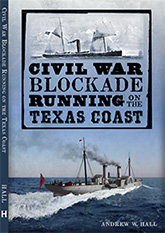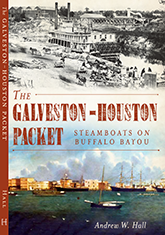Was Rock Island the “Andersonville of the North”? Um, No.
Over at The Historic Struggle, Rob Baker notes that today is the 150th anniversary of the arrival of the first prisoners at Camp Sumter, better known today as Andersonville. Camp Sumter is the most infamous of all prisoner of war camps on either side during the Civil War.
One thing that is sometimes heard is that Rock Island was “the Andersonville of the North.” That assertion is something that interested me personally, since once of my relatives spent almost eighteen months there in 1864-65, a period that includes almost all of Rock Island’s time as a PoW camp. It was a terrible experience, made worse by the vindictiveness of Union authorities who ordered a reduction in rations in retaliation for the treatment of Union PoWs in the Confederacy, specifically at Camp Sumter.
But was Rock Island objectively as bad as Andersonville? I recently watched a documentary, The Rock Island Civil War Prison: Andersonville of the North? (available for purchase here, or streaming here), that laid out some of the data. The documentary is pretty good, although it has an “unfinished” or “almost there” feel to it; there were several subjects barely touched upon that would justify its expansion to a full hour, instead of just 30 minutes. Nevertheless, it’s worth your time if you have an interest in CW prisons.
The documentary specifically challenges the claim that Rock Island was the “Andersonville of the North.” Taking a lead from that, I looked up some detailed numbers, broken out by month, that show the actual rate of deaths among the prisoners at the two camps, by month. Numbers for Rock Island are available for its entire existence from its opening in late 1863; Andersonville opened a few months later, and most of the prisoners were evacuated from the site in the fall of 1864. Although Andersonville remained in operation until May 1865, the vast majority of deaths among its prisoners occurred between February and November 1864. Death rates are calculated by comparing the number of fatalities with the prisoner population for each month:
Click the little one to get a big one. You can download a spreadsheet of the numbers here. Rock Island data is from the Appendix of Otis Bryan England’s A Short History of the Rock Island Prison Barracks (Revised Edition) (Rock Island, Illinois: Historical Office, U.S. Army Armament, Munitions and Chemical Command, 1985). Andersonville data is from p. 321 of John McElroy’s Andersonville: A Story of Rebel Military Prisons (Toledo: D. R. Locke, 1879).
Of course, there’s a simpler way to look at this: more men died at Andersonville than were imprisoned at Rock Island during its entire time as a Civil War prison camp.
So where did this “Andersonville of the North” nonsense come from? The phrase doesn’t show up until the 1940s, and I suspect that, like so many other cherished themes about the war, it originated with Margaret Mitchell, who had Ashley Wilkes survive imprisonment at Rock Island. In Gone with the Wind, Chapter 16, she wrote:

![]()
No question, Rock Island was a bad place to be, with much unnecessary suffering. But it was not the horrific place Andersonville was, by any objective measure. Mitchell’s plot also underscores her shoddy research in this area: Rock Island was a camp for enlisted men only, and Ashley Wilkes was an officer.
![]()

![]()
__________







As an interpreter at Camp Hoffman, Point Lookout State Park in MD, (Also called the Andersonville of the North) I constantly have to deal with myths regarding Northern prison camps. The recovery rate of sick prisoners at Rock Island (88.19%) was not much worse than the recovery rate at Chimborazo Confederate Hospital in Richmond, VA (88.61%). ALL prison camps as well as the winter encampments of both armies were hell holes, but none compared to the horrors of Andersonville. For a really well written and researched book on the subject, I suggest you take a look at “Andersonvilles of the North” by James M. Gilispie.
My interest in the subject came about when I discovered that I have an ancestor who was sent to Andersonville in 1863. He is still there.
I’ve also heard Camp Douglas near Chicago described as the “Andersonville of the North,” along with Elmira. Certainly neither were pleasant but I suppose there was only one Andersonville.
CW prison camps ranged the gamut from “very bad” to “unspeakable,” and I don’t want to minimize or gloss over places like Point Lookout or Camp Douglas. But I do believe that by any objective standard, Andersonville was unique (thank goodness).
Earlier stories on Camp Douglas:
https://deadconfederates.com/2012/07/02/test-excavations-at-camp-douglas/
https://deadconfederates.com/2011/12/26/escape-from-camp-douglas/
Thanks, Andy. And very interesting posts about Camp Douglas, especially Knox Thomas’ tale of escape. Talk about taking the long way home.
And, yes, Andersonville was unique, for a number of reasons.
I suppose every northern POW camp was referred to as “Andersonville of the North” at one time or another.
But I’ve never heard of Rock Island having such a special reputation above all others. IIRC about 2,000 prisoners died out of 12,000…or about 17%. At Andersonville the mortality rate was in the range of 25%-28%. If there are any that deserve the reputation of “Andersonville of the North” it would be Camp Douglas, Chicago, IL, and Elmira, NY.
Not sure if you will ever read this, but yes Rock Island’s camp was said to be just that. The “Gone with the Wind” novel of course told us that, but it was originally started by a local newspaper editor J. B. Danforth Jr. called the Rock Island Argus who had a beef with the commander of the POW camp Adolphus Johnson and repeatedly said that in his newspapers. Then the commander told the paper editor that he was a traitor and should be incarcerated which brought in more local newspapers to repeat what the Rock Island Argus falsely stated.
That’s an interesting angle, thanks. But I still don’t think the numbers bear out that comparison.
A visit to the Andersonville site is quite sobering if one takes the time to contemplate the conditions and the mass of humanity confined in the open in such a small place. The cemetery adds to the somber atmosphere.
I have not been to the Rock Island Prison, but my Great Great Grandfather is buried there in grave number 1563. He died on October 14, 1864, having been captured near Marietta, GA, in June of that year.
It is a shame, to me, that there is not more published history work done on the conditions in which the soldiers and civilians in active service, in hospital, in prison, or at home lived during this tragic war.
Convergentlines, thanks for taking time to comment. There are a number of good studies of CW prisons out there. <strong>Rebels at Rock Island is one you’ll definitely want to look for. Portals to Hell covers CW prisons more broadly, North and South.
I think I have read both the books you mention. Would like to find more on the conditions in areas where armies pass by and other home front issues. For example, is there any good works on the devastation of Sherman’s raids in the Meridian, MS, area? Also, of interest is the affects of army foraging for supplies and animals.
There’s this one, though I have not read it and have no view of it one way or another:
http://www.amazon.com/Shermans-Mississippi-Campaign-Buck-Foster/dp/0817315195
http://freepages.genealogy.rootsweb.ancestry.com/~keller/ovi80/work/anderson.html
I’ve posted a link to a page with a list of the men from the 80th Ohio who were held at Andersonville. There were nine, eight of them captured at Tunnel Hill during the Battle of Chattanooga. My great great grandfather’s older brother, Abraham Steele, was the first of the three that failed to survive incarceration there. He died of diarrhea in April, 1864, about a month after arrival at the camp in early March, following three months of captivity at Cataba in Alabama. Six of the nine survived Andersonville, although two of the survivors were put aboard the Sultana upon their release. One of those two survived the boiler explosion and was healthy enough to swim ashore.
There were six brothers in my ancestor’s family, all of military age during the war. They belonged to the Church of the Brethren, who were pacifists descended from an immigrant named George Steele who was brought to Philadelphia in 1754 on a ship called the Friendship along with about 120 other young men who spoke German but were from villages along the Rhine then occupied by the French. George settled in Bedford PA and served with the 1st Pennsylvania during the American Revolution. One of his sons moved to the Tuscarawas in Ohio where he made barrels and ran a flat boat before the War of 1812. He brought his family back to Bedford for most of that war and then returned to Ohio along with a number of his brothers and their children who settled in Ohio between 1815 and 1830. Abraham was the second son of Elias Steele and the grandson of George Jr’s brother Philip, a wagon maker by trade. They were cousins to the Studebakers. John Studebaker was a blacksmith, not a wagon maker. The Studebakers got a contract in 1864 to build wagons for the Union army.
The Steele family moved from Ohio to South Bend, Indiana in the summer of 1864, shortly after receiving the news that Abraham died at Andersonville. Abraham was the only one of the six brothers to enlist during the Civil War. He was captured at Corinth in 1862, released a year later, and captured again at Chattanooga about a month after rejoining his regiment. He spent most of his enlistment, all but three months, as a prisoner of war.
More than two out of every three soldiers incarcerated at Andersonville survived the war. My dad’s great grandfather died of pneumonia secondary to yellow fever while serving with the 27th Wisconsin in 1865. Three out of every four soldiers in that unit survived the war. Only a handful of the men in that unit died in combat. Nearly all of the unit’s 25% mortality rate came from disease, only a few percentage points lower than the 28% figure suffered at Andersonville.
Atlanta was the largest town in the Georgia interior when it fell to the Union army. It contained roughly six thousand people, mostly women, children, slaves and men too old to fight in the war. Camp Sumter, with a population of twenty thousand inmates, was an overnight metropolis, second only to Savannah in size. When Sherman severed the rail lines that converged in Atlanta, he sealed the fate of most of those who perished at Andersonville.
Thanks for this. It’s tough to get a good read on the ‘ Yes but whataboutElmira?’ take when Andersonville is discussed- there’s this knee-jerk disclaimer hanging in the air somone always feels obliged to acknowledge before being allowed to enter the ‘real’ story, the horrors there. Makes you a little crazy when you’re trying to get just, plain information. Understand Elmira was dreadful, loathe the Federal tactics- Andersonville was just singular in scope of sheer torment, someone’s blueprint for Hell.
Lost 3 ancestors there, another survived to be booked aboard The Sultana- survived THAT, family lore held him to have been a jumpy sort of fellow although lived well into the 1900’s. True story.
Izzibel
“Andersonville was just singular in scope of sheer torment, someone’s blueprint for Hell.”
Camp Douglas had mis-management, incompetence, and corruption. Bodies sold as dissection cadavers to medical schools. Bodies buried in shallow graves washed out into Lake Michigan. How many died? Was it 4500?…or was it 6000? They lost count. Sounds like a bit of hell too.
They were all pretty awful in their own way. Camp Douglas was a bad one, with around 4,500 deaths, but it was also in operation a lot longer than either Rock Island or Andersonville. Izzibel is correct, though — by measurable standards, Andersonville is “singular.”
Sounds like undocumented speculation in regards to the body count,Ruffian.FYI, had a distant cousin (CSA) die at Camp Douglas…
4,454 known dead are listed in- Confederate Soldiers, Sailors, and Civilians Who Died as Prisoners of War at Camp Douglas, Chicago, III. 1862-1865.
In the book by George Levy (To Die In Chicago) he notes a very large number unaccounted for- 1,391.
So he says Ruffian, haven’t researched it myself.But regardless seems to me once your dead your hell on earth at least is over.
Many of the Rebels were from the warm, never-snowed South and suffered terribly, more so than acclimated Yankees, to the Northern winters: Chicago, Lake Erie, and Elmira are not places where one wants to spend the Winter! The reverse was true of Yanks in the South: they also were not acclimated to the heat and insects of the South.
The prisoners *and* soldiers under arms were mostly farm boys and not used to being around large numbers of people. Many of the Civil War battles involved crowds that would fill our football stadiums twice over. Hygiene was at a minimum, measles and other “childhood” diseases killed thousands because, unlike us, who not only have inoculations, but also contract mild cases from our kindergarten and first grade school mates, these young adults had never been around large and diverse enough population pool to catch diseases. Many of these diseases are harmless to five and six year olds but can kill if an adult catches them.
Numbers like this can be disputed, of course, but these are all taken from a serious, reputable source (E.B. Long’s Civil War Day By Day).
Federal troops held prisoner by CSA: 194,743
Deaths from this group: 30,218
Confederates held prisoner by USA: 214,865
Deaths from this group: 25,976
Estimated US army size (total): 2,000,000
Estimated CS army size (total): 750,000
The estimates for CS army size are very elastic. Figures run as high as 1.5 million, and as low as 600,000.
Now, let’s look at non-battlefield deaths, those from disease, accidents, etc.
Federal non-battlefield deaths: 219,930
CSA non-battlefield deaths: 164,000 (estimate)
So what’s my point? Well, let’s compute some percentages.
Death rate for Federal prisoners in CS camps: 15.5%
Death rate for CS prisoners in Federal camps: 12.1%
Non-battle death rate for Federal troops: 11.0%
Non-battle death rate for Confederates 21.9%
Now let me suggest that these figures put a few things in perspective. Taken as a whole – and no one is suggesting that Andersonville or Elmira was a fun place to be – it looks like being in prison was not much worse than simply being in the army. In fact, it looks as though it was better for a CS soldier to have been in prison than it was for him to simply be in the army – something which I don’t really believe, and which causes me to suspect the accuracy of the CS army estimate.
But before anybody rants on about how terrible either side was to the prisoners it held, let’s recall that it wasn’t a lot better simply being in the army.
Much of the POW literature was attempts by both sides to justify *their* side, and, especially for the Yankees, to make claims for additional pensions. The Rebels countered with all sorts of excuses and comparisons. Most of that literature is worthless!
The biggest “overkill” on both sides seems to have been the sob stories about the alleged Confederate “Immortal 600” placed on Morris Island in retaliation for the Confederacy placing US prisoners in Charleston under fire. Of the Immortal 600, only forty-four died in prisoner of war camps.
Seven percent.
I think I would have preferred to take my chances with the 600 rather than be in either Elmira OR Andersonville! To say nothing of continuing to serve in the Confederate army!
It does not appear that they were unduly starved or mistreated if their casualty rate was so significantly less than either POW rates or the normal attrition rates of soldiers in the field, blue or gray.
As you read this, keep in mind that the National Geographic calculated the death rate of mostly white young male emigrants crossing the plains to Oregon and California in the 1840s and 1850s was about 7%, less than that of the average Civil War soldier, but still quite high.
The documentary I mentioned makes a similar claim, that the fatality rate at Rock Island was overall lower than it was for Confederate units in the field. I didn’t discuss that in my post because I haven’t seen the numbers myself, but it seems plausible to me.
Neither side put a lot of effort or resources into running their prisons, and the collapse of the exchange cartel led to the overcrowding in 1864 which was the cause of a lot of misery. But Andersonville is just a singularity for poor planning, poor design, poor operation, poor everything. Wirz may well not have deserved a noose, but neither does he deserve the monument that the UDC gave him.
The great injustice represented by the Wirz hanging is not what happened to Wirz, but that virtually now one else paid any serious penalty for the abuses of prisoners during the war.
Andy — If you haven’t seen this, it may be of interest, The Toys of War — which are not military hardware per se, though they are depicted, particularly communications and naval matters. It’s a board game that was released for the Christmas market in 1865. At the top of the piece is an illustration of “Milton Bradley’s Myriopticon, a parlor game containing images from the history of the “Rebellion” or the American Civil War, came with directions, lecture, a poster and tickets.” There’s a View Game link, which is series of 35 slides from the game, which are fascinating indeed.
Love, C.